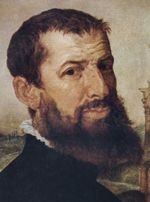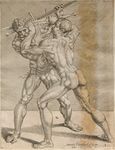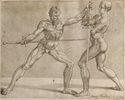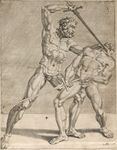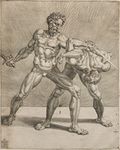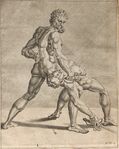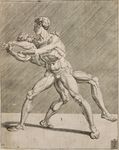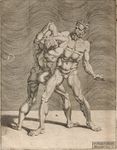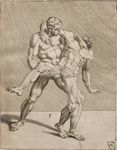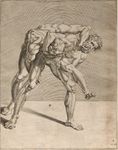|
|
You are not currently logged in. Are you accessing the unsecure (http) portal? Click here to switch to the secure portal. |
Difference between revisions of "Maarten van Heemskerck"
| (3 intermediate revisions by the same user not shown) | |||
| Line 1: | Line 1: | ||
| − | {{ | + | {{infobox artist |
| name = Marten van Heemskerck | | name = Marten van Heemskerck | ||
| − | | image = | + | | image = file:Heemskerck-zelfp-detail.jpg |
| imagesize = 150 | | imagesize = 150 | ||
| alt = | | alt = | ||
| Line 15: | Line 15: | ||
| movement = Mannerism | | movement = Mannerism | ||
| works = | | works = | ||
| − | | patrons = Cornelis Muys, Haarlem council,<br>Delft Council | + | | patrons = Cornelis Muys, Haarlem council,<br/>Delft Council |
| influenced by = Jan van Scorel, Giorgio Vasari | | influenced by = Jan van Scorel, Giorgio Vasari | ||
| − | | influenced = Karel van Mander, Hendrik Goltzius,<br>Cornelis van Haarlem | + | | influenced = Karel van Mander, Hendrik Goltzius,<br/>Cornelis van Haarlem |
| awards = | | awards = | ||
}} | }} | ||
| − | |||
'''Marten Jacobsz Heemskerk van Veen''' (Marten van Heemskerck; 1498 – October 1, 1574), was one of the leading Dutch portrait and religious painters of the sixteenth century, famous for his depictions of the Seven Wonders of the World. | '''Marten Jacobsz Heemskerk van Veen''' (Marten van Heemskerck; 1498 – October 1, 1574), was one of the leading Dutch portrait and religious painters of the sixteenth century, famous for his depictions of the Seven Wonders of the World. | ||
| Line 29: | Line 28: | ||
== HEMA Contributions == | == HEMA Contributions == | ||
| − | In 1552, Heemskerck produced a series of twelve sketches of fencers and wrestlers. These were published by Dutch printer [[Dirck Coornhert]], and a copy was later bound into the [[Hans Medel Fechtbuch (Cod.I.6.2º.5)|Codex I.6.2º.5]] by [[Paulus Hector Mair]]. | + | In 1552, Heemskerck produced a series of twelve sketches of fencers and wrestlers. These were published by Dutch printer [[Dirck Coornhert]], and a copy was later bound into the [[Hans Medel Fechtbuch (Cod.I.6.2º.5)|Codex I.6.2º.5]] by [[Paulus Hector Mair]].{{-}} |
| − | {{image|Cod.I.6.2º.5 43v | + | {{image|Cod.I.6.2º.5 43v.jpg}} |
| − | {{image|Cod.I.6.2º.5 44r | + | {{image|Cod.I.6.2º.5 44r.jpg}} |
| − | {{image|Cod.I.6.2º.5 44v | + | {{image|Cod.I.6.2º.5 44v.jpg}} |
| − | {{image|Cod.I.6.2º.5 45r | + | {{image|Cod.I.6.2º.5 45r.jpg}} |
| − | {{image|Cod.I.6.2º.5 45v | + | {{image|Cod.I.6.2º.5 45v.jpg}} |
| − | {{image|Cod.I.6.2º.5 46r | + | {{image|Cod.I.6.2º.5 46r.jpg}} |
| − | {{image|Cod.I.6.2º.5 46v | + | {{image|Cod.I.6.2º.5 46v.jpg}} |
| − | {{image|Cod.I.6.2º.5 47r | + | {{image|Cod.I.6.2º.5 47r.jpg}} |
| − | {{image|Cod.I.6.2º.5 47v | + | {{image|Cod.I.6.2º.5 47v.jpg}} |
| − | {{image|Cod.I.6.2º.5 48r | + | {{image|Cod.I.6.2º.5 48r.jpg}} |
| − | {{image|Cod.I.6.2º.5 48v | + | {{image|Cod.I.6.2º.5 48v.jpg}} |
| − | {{image|Cod.I.6.2º.5 49r | + | {{image|Cod.I.6.2º.5 49r.jpg}} |
== References == | == References == | ||
{{reflist}} | {{reflist}} | ||
| − | |||
{{DEFAULTSORT: Heemskerck, Maarten van}} | {{DEFAULTSORT: Heemskerck, Maarten van}} | ||
[[Category:Artists]] | [[Category:Artists]] | ||
| + | |||
| + | [[Category:Grappling]] | ||
| + | [[Category:Greatsword]] | ||
| + | [[Category:Side Sword]] | ||
Latest revision as of 16:09, 11 April 2016
Marten Jacobsz Heemskerk van Veen (Marten van Heemskerck; 1498 – October 1, 1574), was one of the leading Dutch portrait and religious painters of the sixteenth century, famous for his depictions of the Seven Wonders of the World.
Maarten Jacobsz was born at Heemskerk, North Holland, halfway between Alkmaar and Haarlem. His father was a small farmer, Jacob Willemsz. van Veen (whose portrait he painted). According to his biography, written by Karel van Mander,[1] he was apprenticed to Cornelis Willemsz in Haarlem. Recalled after a time to the paternal homestead and put to the plow or the milking of cows, young Heemskerk took the first opportunity that offered to run away, and demonstrated his wish to leave home forever by walking in a single day the 50 miles which separate his native hamlet from the town of Delft. There he studied under Jan Lucasz whom he soon deserted for his contemporary Jan van Scorel of Haarlem. Even today, many of Heemskerck's paintings are mistaken for work by van Scorel. He boarded at the home of the wealthy Pieter Jan Foppesz (the van Mander spelling is Pieter Ian Fopsen), curate of the Sint-Bavokerk. He knew him because he owned a lot of land in Heemskerck. This is the same man whom he painted in a now famous family portrait, considered the first of its kind in a long line of Dutch family paintings.[2]
In 1532 he started on a Grand Tour, with the purpose of seeing and painting the seven wonders of the world, and during which he visited the whole of northern and central Italy, stopping at Rome, where he had letters of introduction from van Scorel for the influential Dutch cardinal William of Enckenvoirt. Before he left, he painted a scene of St. Luke painting the Virgin as an altarpiece for the St. Luke's altar in the Bavokerk. On the bottom it states in a tromp l'oeil paper that he painted it for his comrades.[3] It is evidence of the facility with which he acquired the rapid execution of a scene-painter that he was selected to co-operate with Antonio da San Gallo, Battista Franco and Francesco de' Rossi (Il Salviati) to decorate the triumphal arches erected at Rome in April 1536 in honour of Charles V. Giorgio Vasari, who saw the battle-pieces which Heemskerk then produced, and said they were well composed and boldly executed.
HEMA Contributions
In 1552, Heemskerck produced a series of twelve sketches of fencers and wrestlers. These were published by Dutch printer Dirck Coornhert, and a copy was later bound into the Codex I.6.2º.5 by Paulus Hector Mair.
References
- ↑ Dutch online text, from the DBNL, K. van Mander, Het Schilder-boeck, Haarlem, 1604 (reprinted Utrecht 1969, translated as The Lives of the Netherlandish and German Painters, H. Miedema, ed. 1994-99)
- ↑ retrieved juli 2009 Families in beeld, - Frauke K. Laarmann, Families in beeld: De ontwikkeling van het Noord-Nederlandse familieportret in de eerste helft van de zeventiende eeuw. Hilversum,2002, Verloren, ISBN 978-90-6550-186-8
- ↑ "Ter eeren S. Lucas heeft hy't bedreven/Dus ghemeen ghesellen heeft hy mede bedacht."

